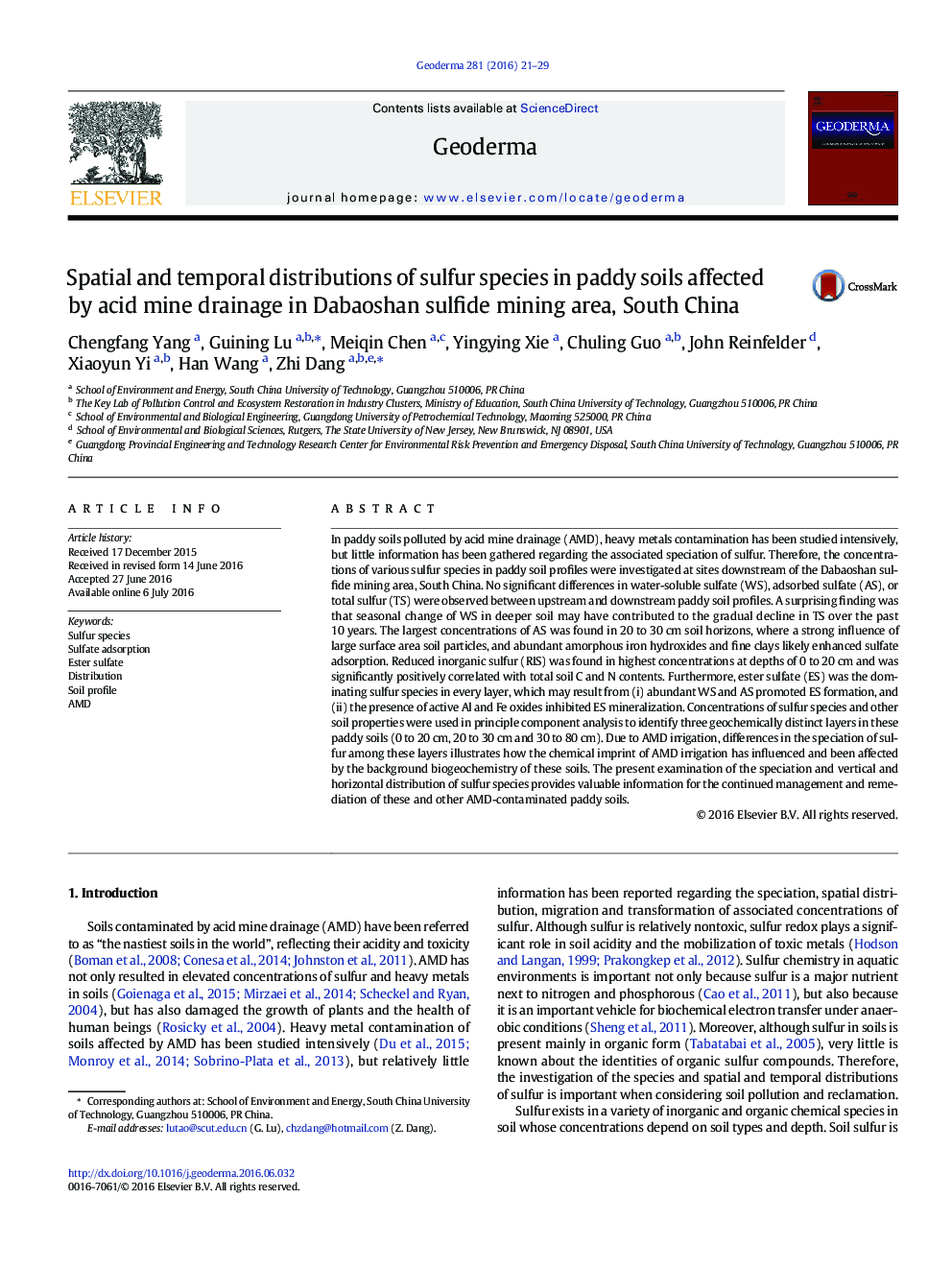| Article ID | Journal | Published Year | Pages | File Type |
|---|---|---|---|---|
| 6408245 | Geoderma | 2016 | 9 Pages |
â¢The concentrations of various sulfur species in paddy soil profiles were investigated.â¢No significant differences in WS, AS, or TS were observed.â¢WS in deeper soil may have contributed to the gradual decline in TS.â¢Ester sulfate (ES) was the dominating sulfur species in every layer.â¢Soil profile could be divided into three layers by sulfur species and concentrations.
In paddy soils polluted by acid mine drainage (AMD), heavy metals contamination has been studied intensively, but little information has been gathered regarding the associated speciation of sulfur. Therefore, the concentrations of various sulfur species in paddy soil profiles were investigated at sites downstream of the Dabaoshan sulfide mining area, South China. No significant differences in water-soluble sulfate (WS), adsorbed sulfate (AS), or total sulfur (TS) were observed between upstream and downstream paddy soil profiles. A surprising finding was that seasonal change of WS in deeper soil may have contributed to the gradual decline in TS over the past 10Â years. The largest concentrations of AS was found in 20 to 30Â cm soil horizons, where a strong influence of large surface area soil particles, and abundant amorphous iron hydroxides and fine clays likely enhanced sulfate adsorption. Reduced inorganic sulfur (RIS) was found in highest concentrations at depths of 0 to 20Â cm and was significantly positively correlated with total soil C and N contents. Furthermore, ester sulfate (ES) was the dominating sulfur species in every layer, which may result from (i) abundant WS and AS promoted ES formation, and (ii) the presence of active Al and Fe oxides inhibited ES mineralization. Concentrations of sulfur species and other soil properties were used in principle component analysis to identify three geochemically distinct layers in these paddy soils (0 to 20Â cm, 20 to 30Â cm and 30 to 80Â cm). Due to AMD irrigation, differences in the speciation of sulfur among these layers illustrates how the chemical imprint of AMD irrigation has influenced and been affected by the background biogeochemistry of these soils. The present examination of the speciation and vertical and horizontal distribution of sulfur species provides valuable information for the continued management and remediation of these and other AMD-contaminated paddy soils.
